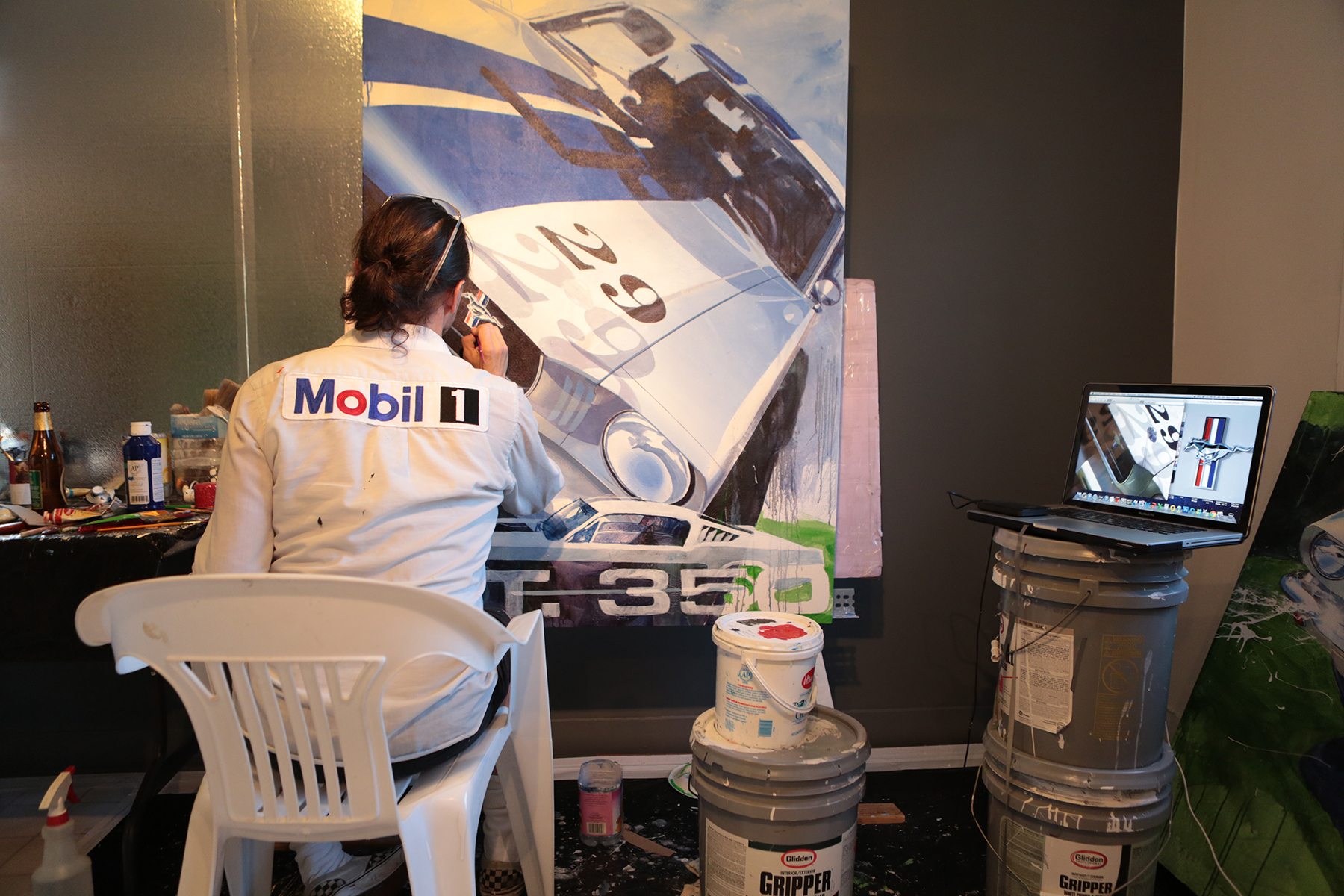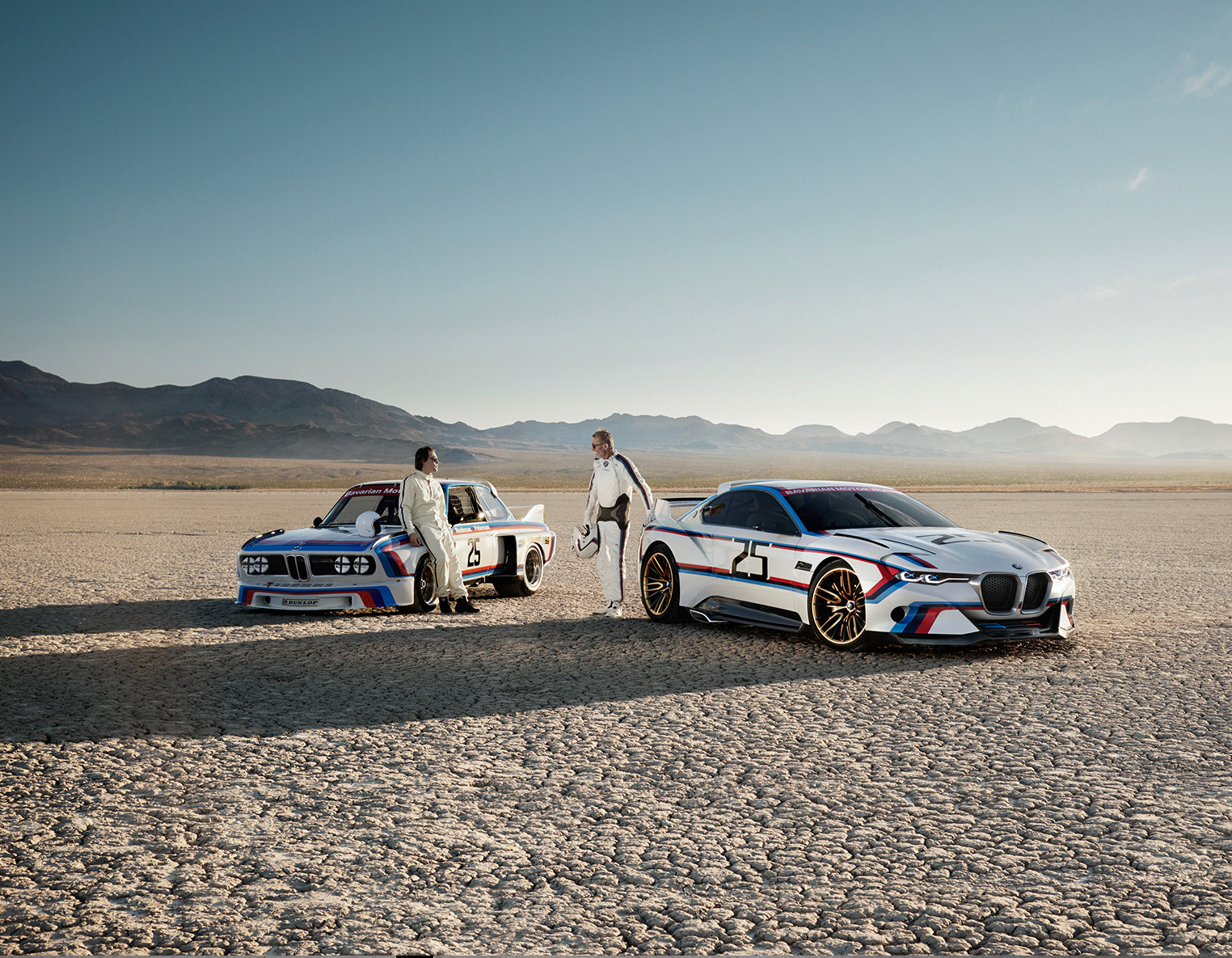
Peak Retrofuturism and the man
responsible for the Ford GT
Story By: Kyle Hyatt
Photography By: Jeremy Ylagan
The retrofuturism movement among American car companies in the early 2000s spawned some truly awful looking cars, chief among them was of course the Chrysler PT Cruiser. The PT Cruiser, and by extension the Chevy HHR, became the wayback machines of choice for boomers desperately looking for any way to relive their past without actually having to deal with the problems inherent with owning a classic car. Slightly higher on the retrofuturist food chain would be the fifth-generation Ford Mustang, again, with a design that seemed modern yet still harkened back to a rosier past that with every passing year begins to run together with half-remembered scenes from American Graffiti. Then, at the far right end of the continuum you have the Ford GT. The GT represented the platonic ideal of what retrofuturism, taken to its logical conclusion, could have been had the movement lacked the cynicism that seemed so baked in from the start. The Ford GT was a higher truth. The man behind that higher truth was Camilo Pardo.

Camilo Pardo was born into an artistic family New York City in the early 1960s and much of his early childhood was spent going to museums and looking at the modern art that his parents loved. This had a profound effect on young Camilo and by the time the family picked up and moved to Detroit when he was 10, his love of art had reached full-blown status. Talking about present-day Detroit can elicit a number of responses from people, depending on who you talk to, but in the 1970s Detroit was still in its heyday. The factories were going around the clock, employing thousands upon thousands of people and making some of the most iconic cars in history. It was a different time, and this too affected Camilo deeply. His love of cars was still nascent in New York but by the time he got to Detroit he was a lost cause. There was no going back.
Camilo was accepted into Detroit’s prestigious Center for Creative Studies to study Transportation Design. He graduated in 1985 and was offered a position with the Ford Design Center in Dearborn. That position led to postings in Italy and Germany throughout the 1980s and early 1990s. Eventually he was called home to work on a special project. That project became the GT90 concept. The GT90 debuted in 1995 at the Detroit Auto Show and was the world’s introduction to Ford’s “New Edge” design language. The idea for the car originally began as a spiritual successor to Ford’s legendary Le Mans-winning, Ferrari-crushing GT40 race cars but the designers ran wild and soon the GT90 was so out there, and bore so little resemblance to the original GT that it soon became its own entity. The GT90 was a brutal looking car and touted some pretty incredible performance figures such as a 140mph standing quarter mile and a top speed of 235 miles per hour. The GT90 ditched the GT40s mid-mounted V8 and instead made use of a 6 liter V12 that was quadruple turbocharged to produce in excess of 720hp. Sadly, the GT90 was never put into production.
After the GT90 concept, Ford decided to revisit their idea of a GT40 tribute and this time put Camilo in charge of the project, under the direct supervision of VP of Global Design, J Mays. The GT was supposed to be the tip of the spear for Ford’s grand revival of their “heritage” names and was supposed to be debuted for their centennial in 2003. The GT is perhaps the best executed of all of the retrofuturist cars because its proportions so closely ape those of the original and its touches of modernization are both subtle and functional. The design flew in the face of many of the popular ideas of the time, one of the biggest of which was the idea of “cab forward design”. Camilo specifically pushed the cab of the GT back to make the overhangs longer and increase the dash to axle measurement. This has the effect of making the car look sleeker and more natural. Camilo also made surfaces flatter, removed the crown of panels in an effort to make the car look more taut and purposeful, leaner.

“When we were given the brief on the project, we were told that the GT had to look today, tomorrow, and distinctly GT40,” said Pardo. “When you look at supercars, so many of them look very architectural, like the Testarossa or the Diablo. We wanted the GT to look more anatomical, sexier.”
Camilo and the design team for the GT made their deadline, the car debuted at Ford’s centenary, and the rest as they say, is history. The car manages to fetch incredible resale prices even today with standard cars going for over $250,000 and the special vintage race-liveried Heritage editions going for significantly more. Camilo has also created a special line of 1-of-1 Signature Series GT’s that feature individual liveries. They’re stunning.
While the GT remains the apex of Pardo’s career as an auto designer, he has long been deeply involved in other forms of design and art. Pardo is an avid painter and has been since he was a child. His work today runs the gamut from mid-century cars, always shown in motion, to abstracted paintings of women. His parent’s early fascination with pop art was clearly influential on Camilo as an artist and traces of Warhol, Lichtenstein, and Max are sprinkled throughout his oeuvre. Though he’s always painted, his work began getting much more recognition after the success of the GT and soon after he began getting commissions for work. He continues to paint and show his work all over the world.

While he was in school, Camilo also began to dabble in furniture design. He and a group of other student artists started to display their work which included chairs, lamps, and many smaller implements, some of which even sold. One of Camilo’s most notable furniture designs is a chair which strongly resembles the “eyelashes” of the first archetypical supercar, the Lamborghini Miura. Furniture design led to fashion design, which he approached with the same kind of gusto. He frequently makes use of non-traditional materials for his clothes including rubber and vinyl.
These days Camilo spends much of his time painting. He splits time between homes in Detroit and Los Angeles and is frequently traveling to galleries around the world. He’s slowed down a little since leaving Ford, but shows no sign of stopping or stemming the flow of creativity that has carried him through life since childhood. Camilo Pardo is a unique guy in the world of automotive design, a renaissance man, and while we can all blame guys like J Mays for bringing us the curse of retrofuturism and all the crappy cars that came along with it, we can thank Camilo for showing us a light in those dark times with his Ford GT.






